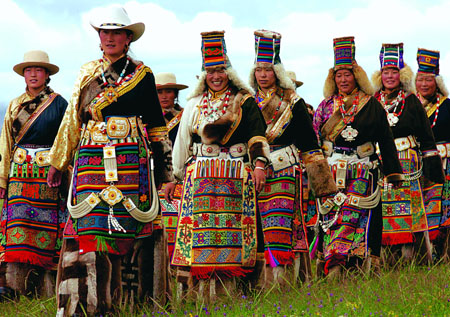| Tibetans form the major ethnic group in the Tibet Autonomous Region. In China as a whole, apart from those scattered in Qinghai, Gansu, Sichuan, Yunnan and other provinces, around half of the people of the Tibetan ethnic group dwell in Tibet. As one of the most ancient ethnic group in China, the Tibetan race was formed in the 7th century when the Tubo Kingdom unified many tribes on the Qinghai-Tibet Plateau. As these people have since been living there ever since, the bulk of the plateau is referred to as the Tibetan-inhabited area.

Tibetan women in festival garments in Damxung livestock breeding area
The Tibetan race played an important role in the formation and development of the Chinese nation. According to historical documents in Chinese, in the course of its development, the Tibetan race expanded to include the Han, Mongolian, Manchurian, Qiang and Naxi peoples. Such a situation contributed to the characteristics of the evolution of the Chinese nation and the development of Chinese history.
In addition to Tibetans, other ethnic groups, including Han, Hui, Moinba, Lhoba, Naxi, Nu, Derung, as well as Deng and Sherpa peoples, are found in Tibet. Other peoples come from other parts of China who are technical personnel, teachers, medical workers and others helping with economic and social development in Tibet. In addition, there is some transitory population engaged in labor service, commerce, transport business or catering trade.
|





